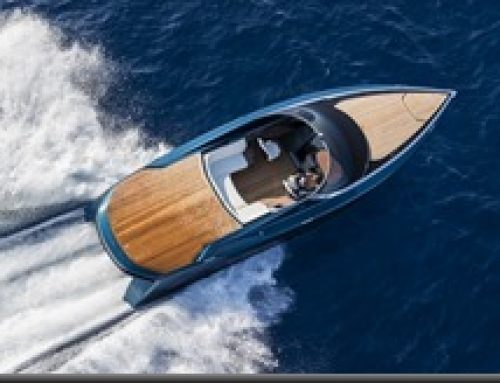During a recent press conference at the National Business Aviation Association (NBAA) annual meeting and convention in Orlando, Fla., the company also highlighted key testing milestones that have been successfully accomplished with the HondaJet moving closer to certification and delivery.
“An assembly line for HondaJet production is in place, major aircraft components including the fuselage and wing have been produced and we have started assembly of the first customer aircraft,” said Honda Aircraft President and CEO Michimasa Fujino. “Commencing production is the most important milestone in the HondaJet program to date, with only the future Federal Aviation Administration Type Certification and first customer delivery ranking greater in significance.”
The Honda Aircraft production facility represents Honda’s expectation of high quality product delivery with lean activities designed to standardise production work and eliminate defects.
Honda Aircraft has developed and implemented its own production process improvement device, focused on operator work instructions while on the assembly floor. Instructions are presented on a tablet device, allowing technicians to see a graphical interface that is easy to read and is specifically designed to the individual tasks. The device reduces the need for printed materials and ensures real-time change management on the floor.
Honda Aircraft has also implemented the Automatic Guided Cart (AGC). The AGC is similar to a mobile robot and is designed to pick up and deliver parts to the production facility’s unique assembly areas. The AGC will allow for safe, on-demand material delivery and coordinated parts flow to production technicians.
Over the past year, Honda Aircraft has completed various flight, systems and structural tests including: crew seat crash tests, speedbrake testing, ultimate load tests, EASA windshield bird strike testing, wind tunnel icing tests, night lighting testing and so on.
Honda Aircraft recently completed the first in a series of remote testing to validate the HondaJet aircraft’s performance under extreme temperatures. Hot-weather flight tests were conducted in Yuma, Ariz., and included critical case tests for both aircraft systems and infrastructure.
For aircraft after-market support, the company recently broke ground on a new, 90,000-square-foot Maintenance, Repair and Overhaul (MRO) facility. The MRO will provide a 24/7 support center and can simultaneously service up to 12 HondaJet aircraft.
The facility, slated for occupancy the second half of 2013, will complement the existing network of HondaJet dealers with all locations delivering the same customer service experience.
In an effort to increase efficiency, Honda Aircraft is committed to integrating sophisticated information technology systems throughout all areas of its business. As part of this effort, a comprehensive software package, specifically designed for aerospace product support, will integrate Honda Aircraft inventory, accounting, service and other critical functions.
Honda Aircraft’s customer service team and Component Control of San Diego, Calif., are working jointly to configure, test and implement Quantum Control software to coincide with the MRO facility’s opening next year.
To facilitate pilot training as the HondaJet approaches entry into service, Honda Aircraft has partnered with FlightSafety® International, the world’s leading aviation training organisation. The simulator is in production and will be installed in the simulator bay at the Honda Aircraft world headquarters campus in Greensboro, N.C.
In September, the American Institute of Aeronautics and Astronautics (AIAA) awarded its revered Award for Aircraft Design to Honda Aircraft Company President and CEO Michimasa Fujino. Mr. Fujino was recognised by the AIAA for pioneering the optimum HondaJet Over-The-Wing Engine Mount (OTWEM) configuration that reduces wave drag and increases drag divergence Mach number.
The HondaJet OTWEM configuration also maximises aircraft cabin space, increases cruise fuel efficiency and reduces interior sound and exterior noise. Other significant HondaJet innovations include a natural-laminar flow (NLF) nose section and wing leading edge and a composite fuselage. These innovations combined make the HondaJet the fastest, most spacious and most fuel efficient jet in its class.
“Honda is known for its methodical approach in engineering and processes,” said Mr. Fujino. “To this end, our commitment to deliver the best possible product that will bring new value to aviation remains. We have taken the necessary time and effort with the HondaJet program to do it right and give our customers the finest product with the best ownership experience possible.”






Pour ceux qui ont la capacité de créer la fabrication moulée la plus avancée, les plus sophistiqués affrontent tous les risques et désastres.
I constantly spent my half an hour to read this webpage’s articles
daily along with a cup of coffee.
This web site definitely has all of the information I needed concerning this subject and didn’t know who
to ask.
I think everything published was very logical. However, consider this, what if you wrote a catchier post title?
I mean, I don’t want to tell you how to run your website, however what if you added a post title that grabbed people’s attention? I
mean Honda Aircraft Company begins HondaJet Production | Gay carboys is a
little vanilla. You might glance at Yahoo’s home page and see how
they create post headlines to get people to open the links.
You might add a video or a related pic or two to grab people interested about everything’ve
written. In my opinion, it could make your website a
little bit more interesting.